1 ¾ c. wheat berries
2 c. walnuts
2 c. raisins
1 c. powder sugar
2 packages vanilla sugar
½ bottle vanilla extract
½ bottle rum extract
½ tsp. clove
½ tsp. nutmeg
Zest of one lemon
- In a slow cooker, place 1 ¾ - 2 cups uncooked wheat berries and cover with about 1-2 inches of water.
- Low setting for about 2 hours. (I slightly over cooked mine, but as it will be ground it did not matter too much. If you are doing a koliva that is not ground, keep an eye on it. The berries should be soft, but the seed coating should not be off.)
- 2 cups walnut flour or since I can’t find that I make my own. Set some nuts aside for decoration. Place the remaining walnuts in a food processor until it looks like this and set aside
- Drain wheat. My mother-in-law would blot her wheat if she thought it was too damp. Sometimes I let it drain a bit longer. (You can see mine got a bit over cooked.)
- Set aside to cool. Wheat should not be hot when you grind it, but close to room temperature.
- Place in food processor and pulse until the wheat begins to break down. It should look like steel cut oat meal.
- In a bowl place the wheat, raisins, powder sugar, vanilla sugar, the extracts, clove, nutmeg and zest. My mother-in-law did not use nutmeg, but someone made zito for my father-in-law with nutmeg, and I loved it. I have added to her recipe. (Now, you should spice to your taste. I think I add more clove and nutmeg than this. I grate my own nutmeg and add in the clove as I see fit. Both of these spices are pungent so start off small and work you way to what you like.)
- After you have combined these ingredients, add the walnut flour, setting aside about a fourth for the top. This should make the mixture less sticky.
- Place this in the bowl you wish to use. And I use a soup spoon to smooth and burnish the zito. Like this
- Once the zito is smooth or you have finished with the 3D decorations, dust the top with the remaining walnut flour.
- Using the walnuts and raisins, decorate the top with a cross.
- If you want to do a 3D cross on top, before you place in the decorative bowl set aside some zito to form the cross. I have seen a raised circle around the cross too.

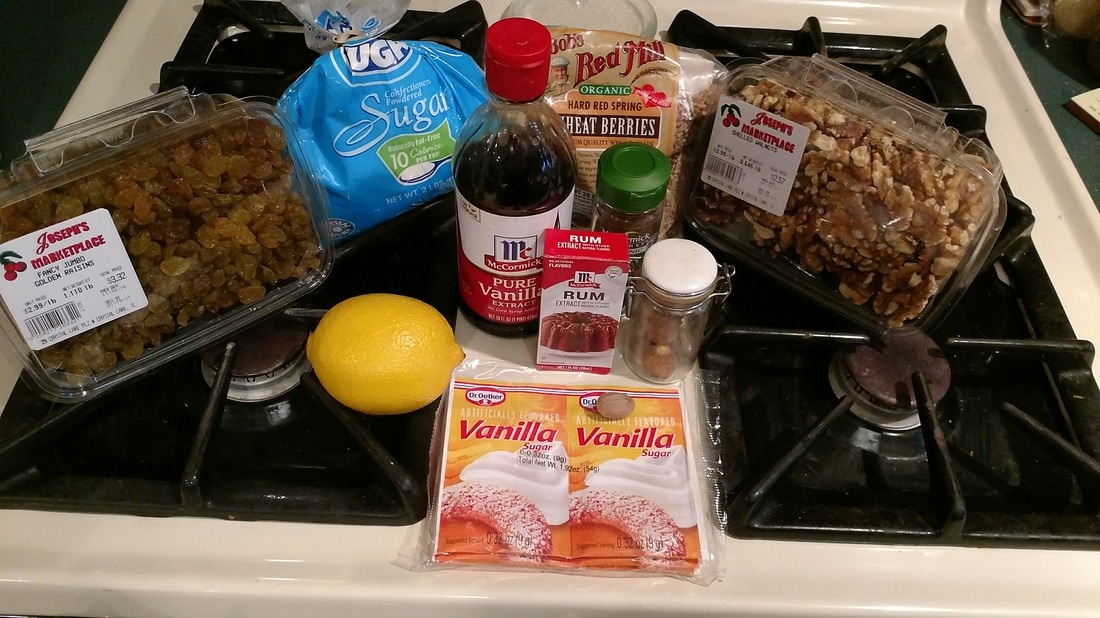
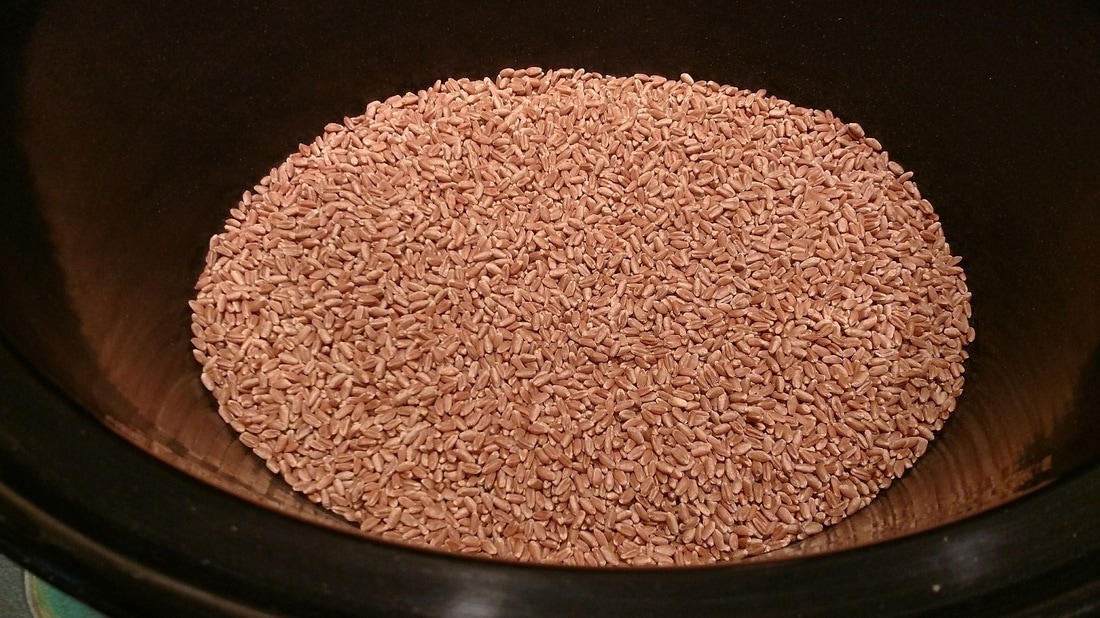
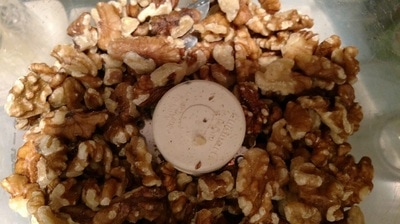
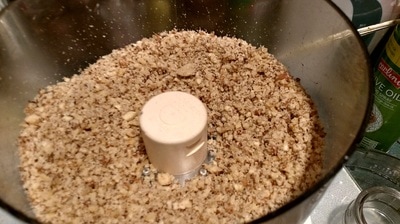
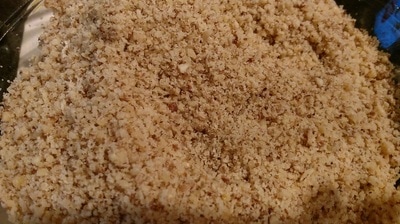

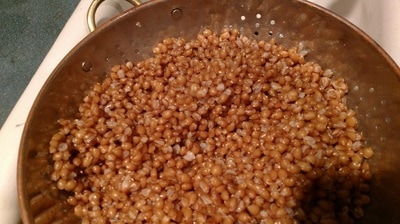
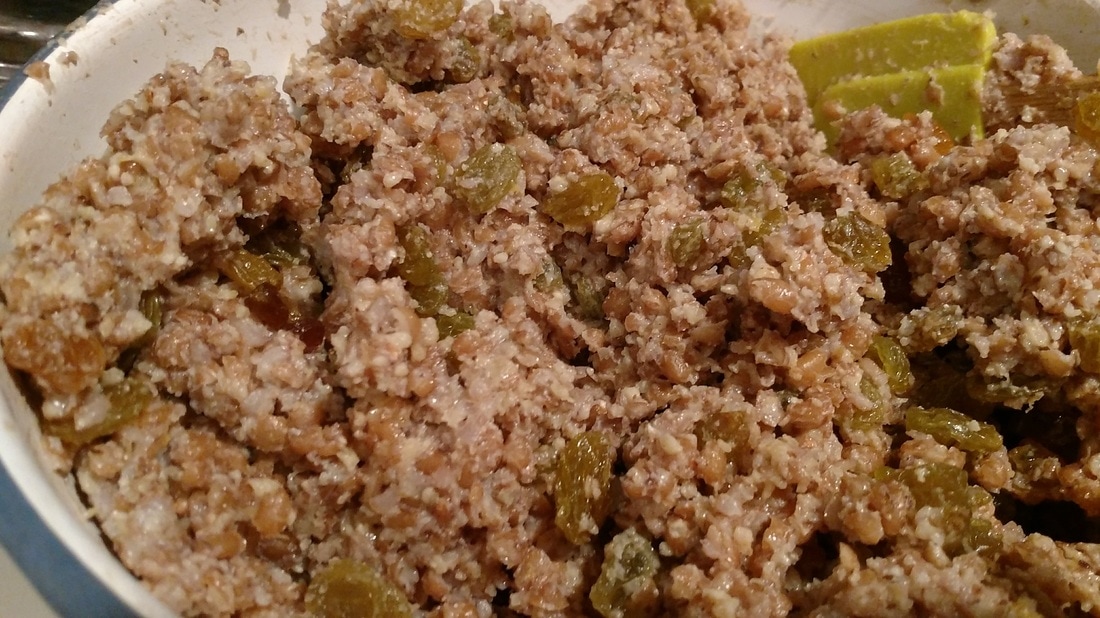
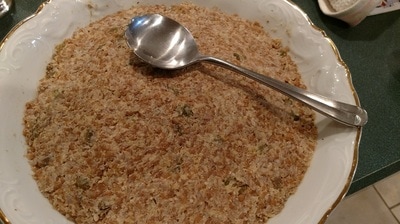
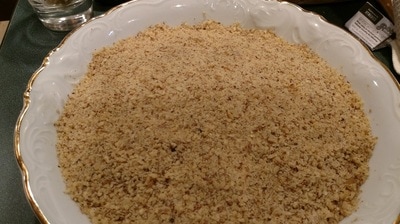

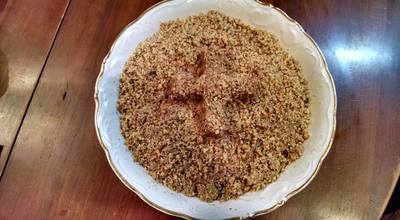
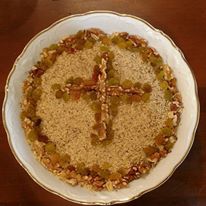
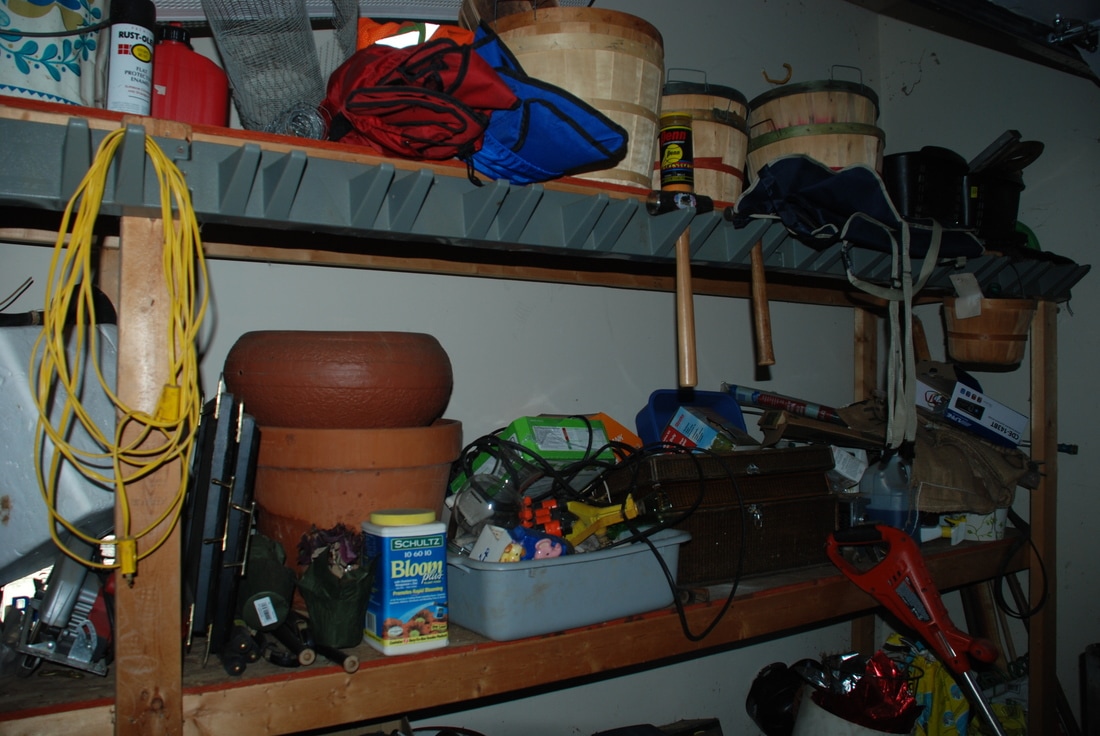


 RSS Feed
RSS Feed